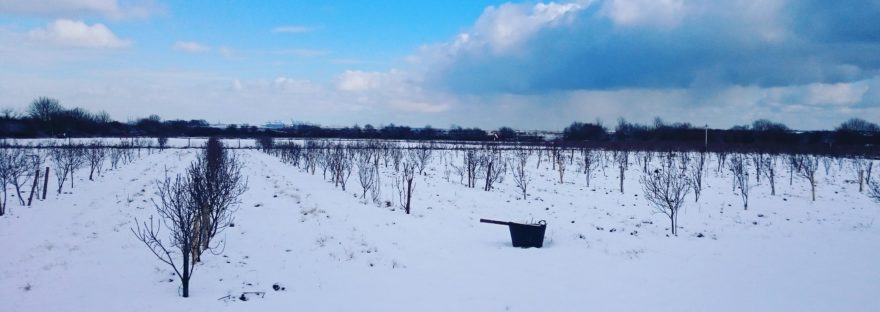In June 2017 we were preparing for our potential first harvest of Siberian sea buckthorn. There were berries on almost all bushes, three to four kilos on some varieties – between eight and ten on variety Chuiskaya. Brix measurements started on June 22nd had figures of 6.5 to 10.5, with each variety jumping into double figures by the end of the month. The problem was that we had no means of harvesting the berries fast enough.
A trip to Siberia in September, then Warsaw to the Euroworks conference provided the opportunity to dissect the issues from harvest 2017. It seemed that the evidence was there that we could grow a good crop of berries – all we needed to do was develop a viable harvesting system.
Good fortune struck again with a trials harvesting equipment designer being based no more than 30 miles from our farm. Added to this, a grant application to fund 40% of the costs of the design and build was accepted.
What could possibly go wrong, harvest 2018 looked like being the culmination of nine years of work.
On March 17th the snow began – a storm now called the “Beast from the East”. The following days of snow and bitterly cold weather ran into what was pollination time for the sea buckthorn.
Sea buckthorn are wind pollinated, so male plants release pollen to be carried by the wind to receptive females.
The weather was cold and the wind was bitter. Of course the plants come from Siberia, where the weather is far more extreme. But our Siberian plants have adapted to our mild coastal climate in Britain. In their native environment they would emerge from winter in April/May. Our first plants start to emerge from dormancy in January, developing into full leaf by March. This development process triggers the development of pollination in mid March – just at the time when the Beast struck.
Hence the weather disrupted pollination. There are some berries on varieties Altaiskaya and Klaudia, but Chuiskaya plants– which were heaviest in yield in 2017, now carry little more than 200 grams each.
This is the nature of farming, but in terms of timing this situation is an unprecedented setback.
Being positive the harvesting system is almost completed and the 200-300kg of what is left of the crop will be enough to test the equipment.
We are trying to irrigate some plants to see if it will improve the berry size. We will also be picking at different stages of ripeness to find the optimum brix measurement for the best taste. Waiting for full ripeness leads to falling vitamin levels and characteristic sharpness. We need to find a taste that is full of balanced flavour.
We have also tried digging up some of the suckers from Altaiskaya variety to pot on and use as replacement plants. Even though we used a mycorrhizal powder the result was a complete failure. The plants once potted died within ten days showing no recovery. It was worth trying, but we will look to buying in 2 year old plants from Siberia again when we expand the orchard.
Although it has been disappointing the vision of the 2017 crop is still firmly in our minds. The purchase of a ladurna cultivator for weeding; a mower and a tractor mounted sprayer for applying foliar feeds, and a harvesting system are all promising success to the future. It will just have to be 2019 not 2018 – learning by experience is often bitter, but are lessons well learnt.

